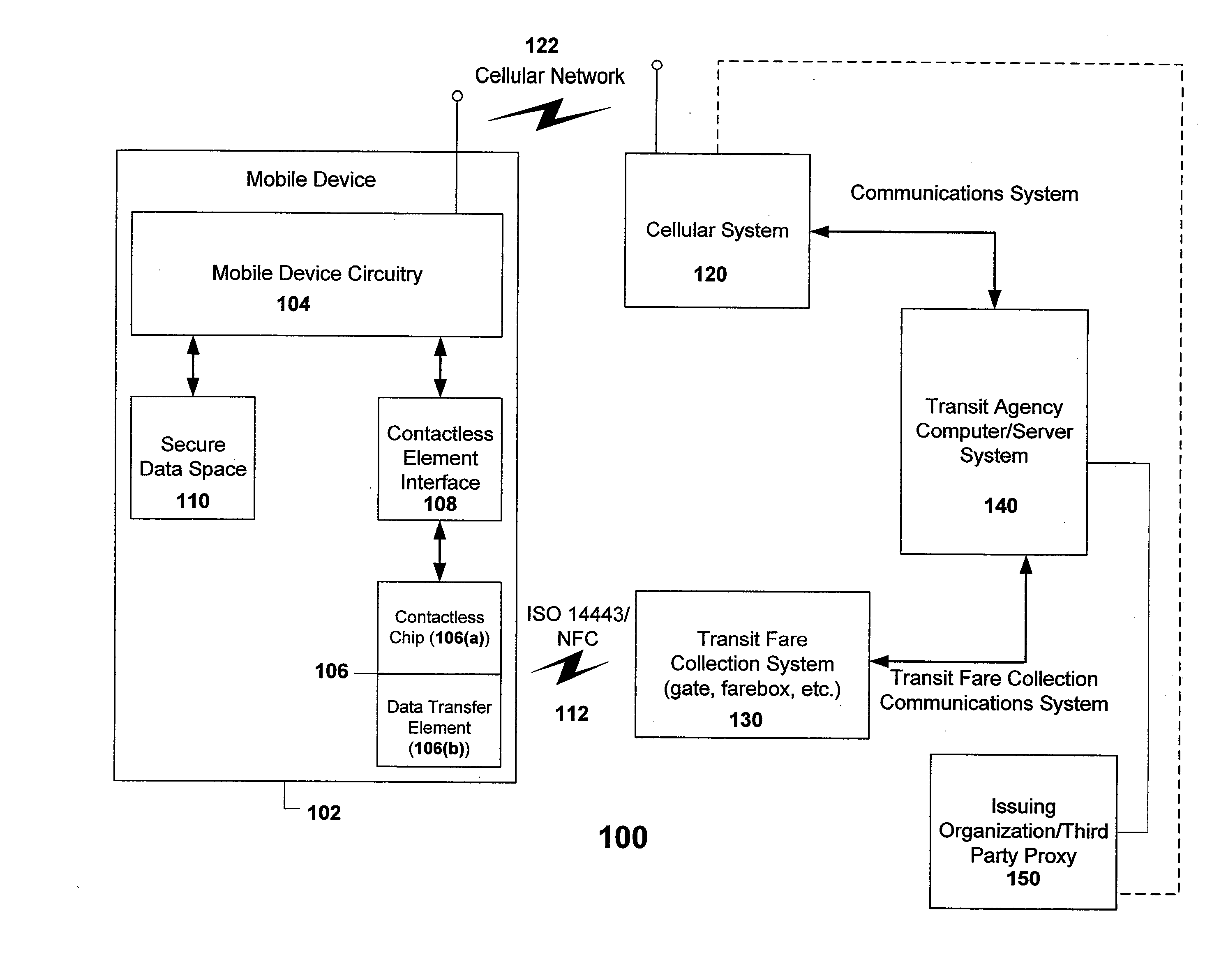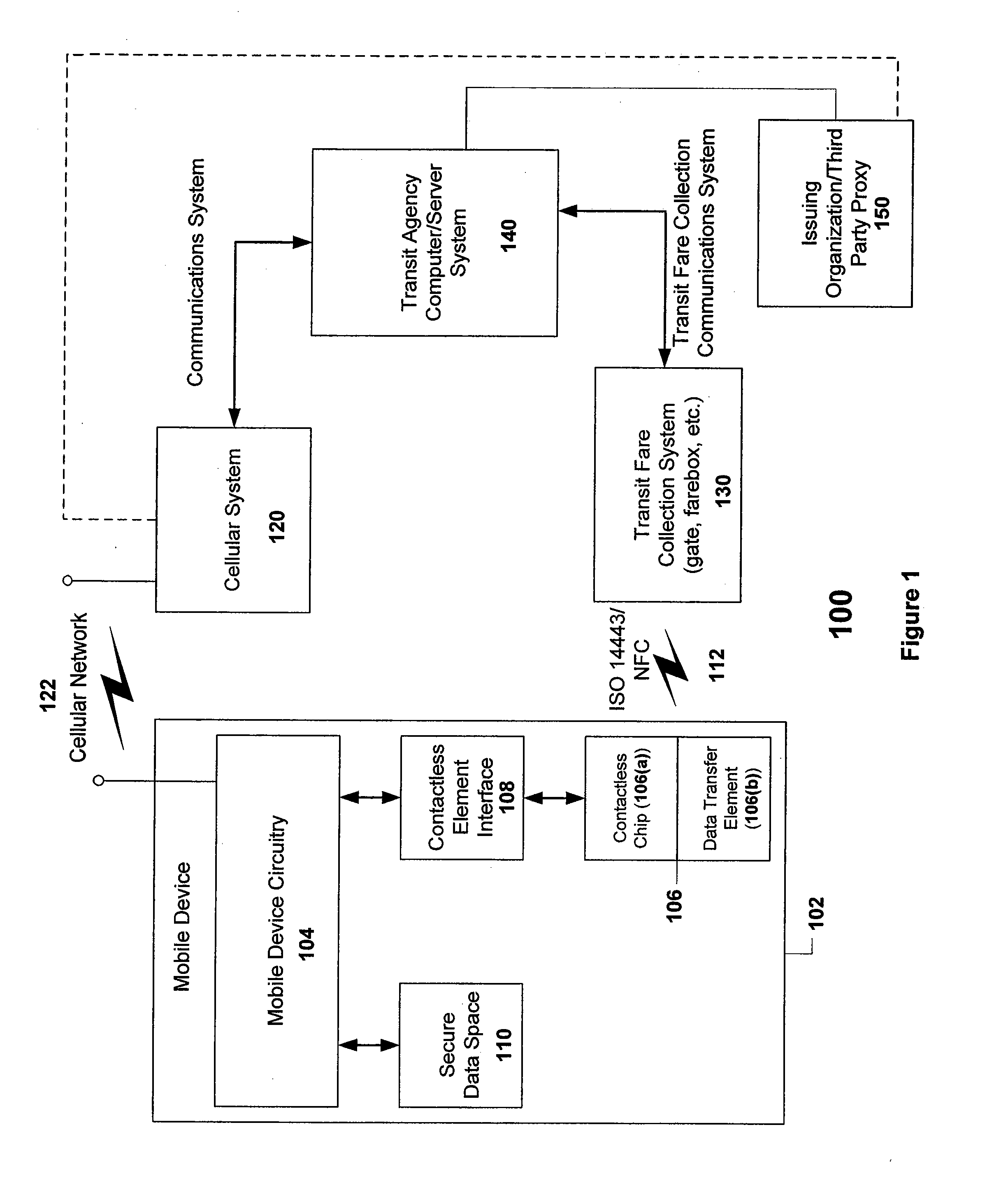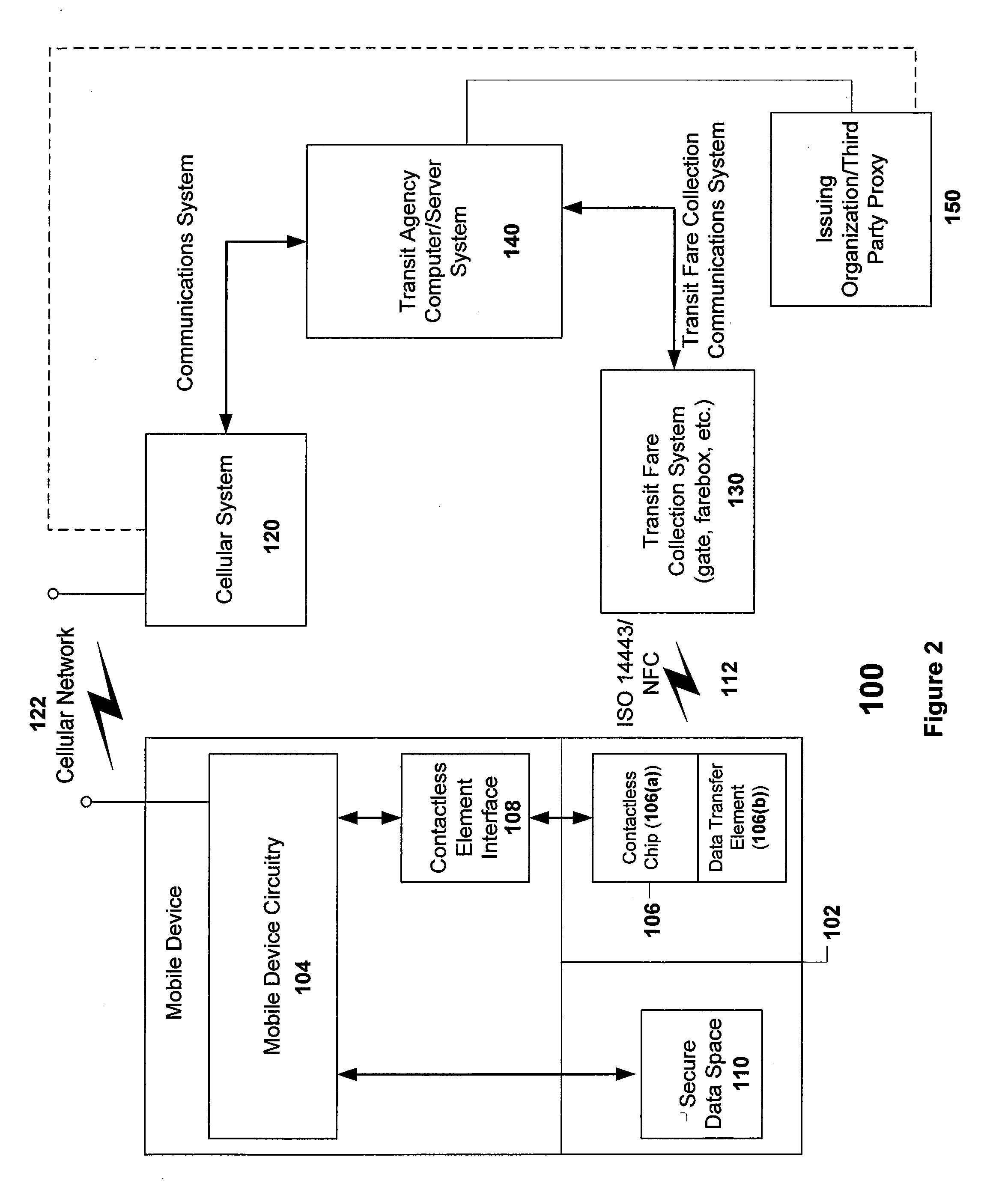Mobile transit fare payment
- Summary
- Abstract
- Description
- Claims
- Application Information
AI Technical Summary
Benefits of technology
Problems solved by technology
Method used
Image
Examples
first embodiment
[0037]FIG. 1 is a functional block diagram of a system 100 for enabling a contactless element contained within a mobile device to be used in the fare payment and collection environment, in accordance with an embodiment of the present invention. As shown in FIG. 1, system 100 includes a mobile device 102 having wireless communications capabilities 122. Mobile device 102 may be a wireless mobile telephone, PDA, laptop computer, pager, etc. In a typical embodiment, mobile device 102 is a cell phone, although as noted, implementation of the present invention is not limited to this embodiment. In the case of a cell phone as the mobile device 102, the device includes mobile device (cell phone) circuitry 104 that enables certain of the telephony functions. Mobile device circuitry 104 is capable of communicating wirelessly with cellular system (i.e., a wireless carrier) 120 via cellular network 122.
[0038]Mobile device 102 further includes a contactless element 106, typically implemented in ...
second embodiment
[0042]FIG. 2 is a functional block diagram of a system for enabling a contactless element contained within a mobile device to be used in the fare payment and collection environment, in accordance with an embodiment of the present invention. FIG. 2 shows the same elements as FIG. 1, with the exception that the secure data space and / or contactless element contained within the mobile device are depicted as removable elements instead of being integrated within the mobile device, as depicted in FIG. 1. Examples of such removable elements include SIM cards, flash memory cards, and other suitable devices.
[0043]As described, inventive system 100 provides an efficient means of using a contactless element in a transit or other environment. By integrating the contactless element with the mobile device's telephony communications capabilities, the cellular network may be used as the data transfer channel between a Transit Agency's computing system and the transit system user's mobile device. Thi...
PUM
 Login to View More
Login to View More Abstract
Description
Claims
Application Information
 Login to View More
Login to View More - Generate Ideas
- Intellectual Property
- Life Sciences
- Materials
- Tech Scout
- Unparalleled Data Quality
- Higher Quality Content
- 60% Fewer Hallucinations
Browse by: Latest US Patents, China's latest patents, Technical Efficacy Thesaurus, Application Domain, Technology Topic, Popular Technical Reports.
© 2025 PatSnap. All rights reserved.Legal|Privacy policy|Modern Slavery Act Transparency Statement|Sitemap|About US| Contact US: help@patsnap.com



